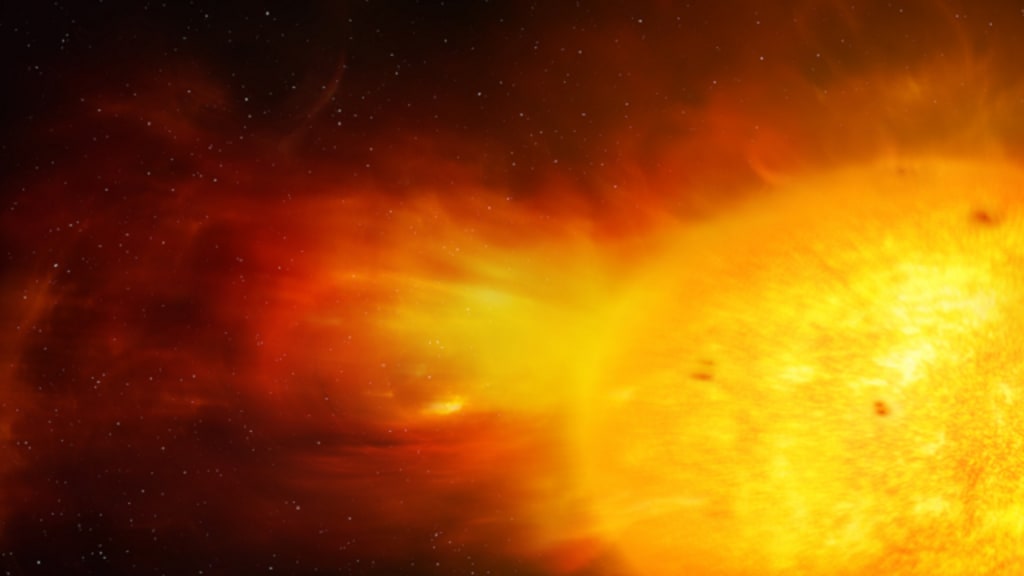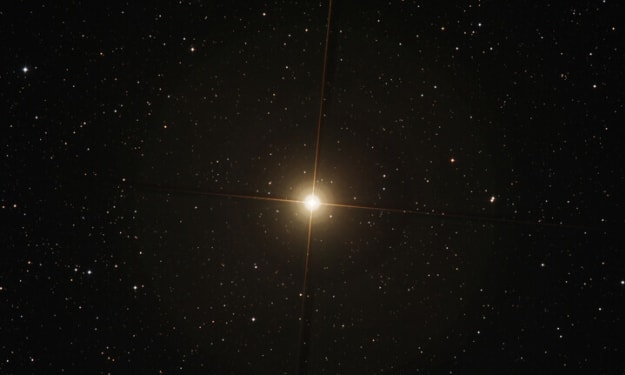Physicists succeed in generating small solar flares in the laboratory!
Our sun regularly erupts, spewing out huge amounts of heat, and to better understand how it works, researchers have created a version that fits inside your lunchbox.

Using a device that converts powerful bursts of electricity into thread-like rings of plasma, a team of physicists has modeled solar flares to study the powerful X-rays and energetic particles that stream through the solar system.
A team led by physicist Yang Zhang of Caltech wrote: "Solar observations detect energetic particles and hard X-rays but cannot reveal the generation mechanism because particle acceleration occurs on a scale smaller than the observational resolution. Here, we present observations from a laboratory experiment that simulates coronal ring physics." solar."
And the Sun is a very dynamic ball of plasma powered by nuclear fusion, so it's no surprise that it's up to a few tricks. Powerful explosions that fling light and particles out into the space around them can affect the solar system over great distances.
And we certainly experience those effects here on Earth. The magnetosphere and atmosphere protect us from hard, high-energy X-rays, but solar ejecta can interfere with satellites and spacecraft, including navigation and communications technology, and can cause power grid fluctuations and failures. So scientists, of course, want to know more about how the sun creates and expels material in the first place.
But there is a lot we can glean from looking at the sun itself. There is a limit to the amount of observations we can make with current technology. In order to study those smaller details, physicists have turned to the next best thing: replicating solar flares in the laboratory.
Physicist Paul Bellan of the California Institute of Technology designed an experimental device specifically for generating structures known as coronal rings. These are long, closed arcs of glowing plasma emitted from the solar photosphere, along magnetic field lines that jut out into the solar corona. These are often associated with increased solar activity, such as flares and coronal mass ejections.
This device consists of gas nozzles, electromagnets, and electrodes in a vacuum chamber.
First, the electromagnets are triggered, generating a magnetic field inside the vacuum chamber. Then the gas is injected into the electrode area.
A strong electrical discharge is then applied on millisecond scales across the electrodes; This ionizes the gas, turning it into a plasma which then forms a ring bound by the magnetic field.
"Each experiment consumes about as much energy as turning on a 100-watt light bulb for about a minute, and charging the capacitor only takes a few minutes," Bilan explains.
Each ring lasts only 10 microseconds and is very small, about 20 centimeters (7.9 inches) long and one centimeter in diameter. But high-speed cameras record every moment of the ring's formation and spread, allowing the research team to analyze its formation, structure, and evolution in detail.
Scientists recently learned that coronal loops not only look like threads, but are also arranged in this way. The new work allowed the team to see what role this structure plays in the production of solar projectiles.
It turns out that these filaments are responsible for the X-ray bursts. Because plasma is a strong conductor, current passes through the loops; But every now and then, the current exceeds the loop's capacity, much like water running through a hose.
When this happens, the team's images show, a corkscrew-like instability develops in the ring, and individual strands begin to break, putting more stress on the remaining strands.
When the filament breaks, a burst of X-rays is produced, accompanied by a negative voltage spike. This voltage drop causes the charged particles in the plasma to accelerate; When these particles slow down, they emit a burst of X-rays.
Future studies of the Sun will help to reveal this process further, but it appears to be consistent with other studies that have found how cutting and reconnecting magnetic field lines leads to powerful bursts of energy. The team plans to follow up by studying the different ways coronal rings can be combined and reconfigured to see what types of explosions this activity produces.
The research has been published in the journal Nature Astronomy. Source: ScienceAlert
Psychological warfare.. The Russian army uses talking drones in the special military operation
The Telegram channel "Zaporozhye Front" published unique scenes in which a talking drone belonging to the Russian army was used.
The video was filmed by fighters of the Kiev regime's army.
One of the Ukrainian soldiers said in the video he filmed: “A bird” (a march) appeared above our heads. Instead of throwing a bomb at us, he began to launch a psychological attack on us and declared in a clear voice: “Your leaders have left you to be killed..and so on.” Then the voice suggested We have to surrender, he said it is better for you to surrender yourself in order to survive."
The talking drone caused great inconvenience among the Ukrainian fighters, who tried to shoot it down with a "Kalashnikov" machine gun.
It is noteworthy that the Russian army had previously used various propaganda means in the special military operation, including "Tiger" armored vehicles equipped with radios, missiles and drones equipped with posters and propaganda leaflets. But the talking drone is a new method of psychological warfare. Source: Rossiyskaya Gazeta
NASA has set a pollution measuring device at an altitude of 36 thousand kilometers! Will send data every hour
This instrument will detect three main elements found in pollution. It has been said that it is as big as the size of a washing machine.
Space agency NASA, in collaboration with Elon Musk's company SpaceX, has launched a device into space so that the pollution level on Earth can be monitored. That means air quality can be measured from space itself. Elon Musk's air quality monitor has been named TEMPO. It is called the Tropospheric Emission Monitoring of Pollution Instrument. Which has been launched into space on 7 April.
NASA 's TEMPO instrument is the first tool left in space, which will measure the pollution of the earth from such a height. According to the agency, it will work in an area of 4 square miles from the Atlantic to the Pacific Ocean, and from Canada to Mexico. TwitterThe agency has given information about this in the post. NASA has said that it will send monitoring data every hour and will monitor throughout the day. This instrument will detect three main elements found in pollution.
It has been said that it is as big as the size of a washing machine. Carolyn Nowlan, an atmospheric physicist at the Harvard and Smithsonian Center for Astrophysics, said weather satellites are very common in geostationary orbit but until now there was no air quality measuring instrument. So far, the pollution monitoring satellites that are present in the lower orbit of the earth, they can tell its data only once a day at a certain time. But about tempo it is said that it can give hourly data.
The agency says that in the Geostationary Orbit, which is 35,786 km above the Earth's surface above the equator, the Tempo will move with the Earth's rotation. That is, it means that the speed with which the earth is rotating, the tempo will also rotate in the orbit with the same speed and thus it will remain at the same place. So that it can send accurate data throughout the day.
3 more countries will not do anti-satellite test, so far 13 countries have taken a big decision, know what will be achieved
The purpose of anti-satellite test is to test such missiles, which can attack and destroy a satellite.
3 more countries of the world have announced that they will not conduct anti-satellite (ASAT) tests. These countries include- Netherlands, Austria and Italy. The purpose of the anti-satellite test is to test such missiles, which can attack and destroy a satellite deployed in space. In the year 2022, America had first made a commitment that it would not conduct anti-satellite tests. America had called upon other countries to do the same. A resolution was also presented in the United Nations General Assembly in this regard.
The resolution passed in December last year. In the same month, nine countries signed it, including Australia, Canada, France, Germany, Japan, New Zealand, South Korea, Switzerland and the United Kingdom. Now 3 more countries have joined this list. spacedotcom reportAccording to the Netherlands, on 27 February, Austria on 3 March and Italy on 6 April signed the resolution. America is already a part of it.
All these countries have agreed not to conduct a type of anti-satellite test known as direct-ascent. Under this, missiles are launched from ships or aircraft stationed on the sea from the ground to destroy the satellites that are finished or finished. Admittedly, such techniques could lead to massive amounts of space waste.
According to the report, in the year 2021, Russia had destroyed one of its satellites 'Cosmos 1408' by doing one such test. Because of that, a lot of garbage spread in space. This debris of satellites can pose a challenge to existing satellites. The International Space Station (ISS) is also always afraid of such wastes.
NASA has been critical of such actions. He says that such steps can affect the existing missions in space. The lives of astronauts can also be in danger. Statistics show that in the last several years, more than 6800 pieces of debris have been born in space due to anti-satellite tests. Of these, 3,472 are still in orbit today.
About the Creator
News Correct
Information WorldWide MORE INFORMATION






Comments
There are no comments for this story
Be the first to respond and start the conversation.